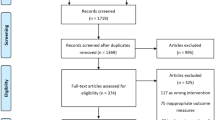Abstract
Two policies of palliative thoracic radiotherapy for NSCLC have been compared in a randomised multicentre controlled trial aimed at simplifying the palliative treatment of patients with poor performance status. A total of 235 patients were entered. They had inoperable, microscopically confirmed disease, too advanced for 'curative' radiotherapy. Their main symptoms were related to the primary intrathoracic tumour even if metastases were present, and they had a poor performance status. Patients were allocated at random to regimens of either 17 Gy given in two fractions of 8.5 Gy 1 week apart (F2 regimen, 117 patients), or a single fraction of 10 Gy (F1 regimen, 118 patients). Two patients (one in each group) were excluded from all analyses because they were found to have had previously treated malignant disease and had been admitted in error. On admission, 95% of the 233 eligible patients had cough, 47% haemoptysis, 59% chest pain, 64% anorexia, and 16% dysphagia. As assessed by the clinicians, these symptoms were palliated in high proportions of patients, ranging in the F2 group from 48% for cough to 75% for haemoptysis, and in the F1 group from 55% for anorexia to 72% for haemoptysis and chest pain. For all five symptoms the median duration of palliation was 50% or more of survival. All these results were similar in the two treatment groups. In contrast, on daily assessment by the patients using a diary card, those treated with the F2 regimen experienced substantially more dysphagia, which was recorded in 56% of the patients compared with 23% in the F1 group (difference 33%: 95% confidence interval 17-48%). The median survival from randomisation was 100 days in the F2 group and 122 days in the F1 group. The F1 regimen, as it requires only a single attendance for treatment, is recommended as a palliative regimen for patients with inoperable NSCLC and a poor performance status.
This is a preview of subscription content, access via your institution
Access options
Subscribe to this journal
Receive 24 print issues and online access
$259.00 per year
only $10.79 per issue
Buy this article
- Purchase on Springer Link
- Instant access to full article PDF
Prices may be subject to local taxes which are calculated during checkout
Similar content being viewed by others
Author information
Consortia
Rights and permissions
About this article
Cite this article
Bleehen, N., Girling, D., Machin, D. et al. A Medical Research Council (MRC) randomised trial of palliative radiotherapy with two fractions or a single fraction in patients with inoperable non-small-cell lung cancer (NSCLC) and poor performance status. Br J Cancer 65, 934–941 (1992). https://doi.org/10.1038/bjc.1992.196
Issue Date:
DOI: https://doi.org/10.1038/bjc.1992.196
This article is cited by
-
Palliative radiotherapy for gastric cancer bleeding: a multi-institutional retrospective study
BMC Palliative Care (2022)
-
Palliative radiotherapy indications during the COVID-19 pandemic and in future complex logistic settings: the NORMALITY model
La radiologia medica (2021)
-
Fractionated palliative thoracic radiotherapy in non-small cell lung cancer – futile or worth-while?
BMC Palliative Care (2018)
-
Hemostatic radiotherapy in advanced bladder cancer: a single-institution experience
Journal of Radiation Oncology (2017)
-
Efficacy of palliative radiotherapy for gastric bleeding in patients with unresectable advanced gastric cancer: a retrospective cohort study
BMC Palliative Care (2015)



